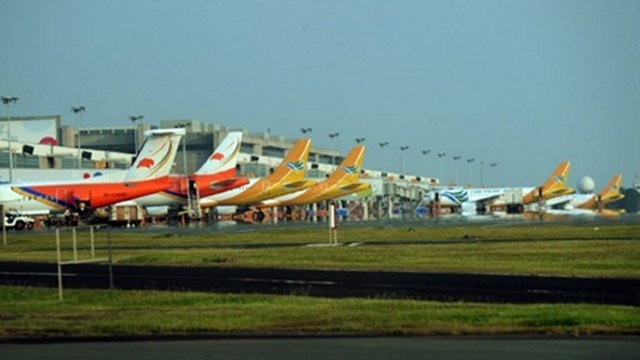By Franco Jose C. Baroña and Benjamin L. Vergara
January 3, 2023
.webp)
CHAOS Passengers wait for their flights at the Ninoy Aquino International Airport after flights were suspended because of a power glitch on Sunday, Jan. 1, 2023. PHOTO BY RENE H. DILAN
IT will take at least three days before airlines finish the recovery flights for stranded passengers affected by the power outage that canceled flights to and from Manila on New Year's Day, Transportation Secretary Jaime Bautista said on Monday.
Although the arrival and departure of passengers at the Ninoy Aquino International Airport (NAIA) and other airports continued on Monday, it is estimated that it will take 72 hours or 3 days before operations will normalize.
Local airlines said it will take time to fully restore their schedules as they reposition aircraft that had been held back or diverted to other airports and adjust the schedules of flights based on revised clearances in coordination with local authorities.
Bautista said that around 65,000 passengers were affected when the Air Traffic Management Center (ATMC), which serves as the facility for controlling and overseeing all inbound and outbound flights and overflights in the Philippine airspace, went down due to power outage, resulting in loss of communication, radio, radar and internet.
Airlines have been asked to operate additional flights or upgrade aircrafts in order to accommodate more passengers.
Bautista said he discussed with Manila International Airport Authority General Manager Cesar Chiong the possibility of operating the runway 24 hours until the recovery flights are over.
"We will also conduct maintenance checks of the runway on a daily basis so we can be sure that our runway is always safe," he said.
Airlines, he added, can use the runway even at night "so their operations will also normalize."
He said two uninterruptible power supplies (UPS) used to provide power to the air traffic management system of the Civil Aviation Authority of the Philippines (CAAP) failed, forcing CAAP to tap commercial power which caused a power surge.
"There was a problem with one UPS that was being used. When they switched to the backup UPS there was still a little problem so our technical team made a way to fix it. Unfortunately when they fixed it, the incoming power to our equipment was 300 volts and it had an effect," Bautista said.
He explained that the malfunction could not be avoided because the ATMC system was outdated.
At present, a back-up power supply is being used and officials have procured a replacement power supply that is expected to arrive in 30 days.
Meanwhile, the Civil Aviation Authority of the Philippines (CAAP) expressed hope that the government will release the requested P120 million budget to upgrade the system of the NAIA in Pasay City.
"As early as last year we asked for P120 million for spare parts [of the Air Traffic Management Center]," CAAP spokesman Eric Apolonio said in a radio interview over DZBB on Monday.
He said that the ATMC will be fully functional in the first quarter of 2023 if the budget is released immediately.
At least 3,000 overseas Filipino workers (OFWs) were affected by the disruption of flights on January 1.
Department of Migrant Workers Undersecretary Hans Leo Cacdac said on Monday that all of the affected OFWs were provided assistance for the rebooking of their flights, while some 400 needed help in hotel accommodations.
Food and transportation assistance were also given to the stranded migrant workers.
The DoTr likewise liaised with the airline partners for the provision of food, refreshments, transportation, lodging and accommodation for passengers.
Philippine Airlines on Monday said that 18 domestic and three international flights were cancelled in addition to some delays caused by some flight adjustments.
Meanwhile, Cebu Pacific said it continues to review its operations while AirAsia Philippines has implemented additional flight adjustments through a recovery flight on Jan. 3, 2023.
WITH CHRISTIAN CROW MAGHANOY

